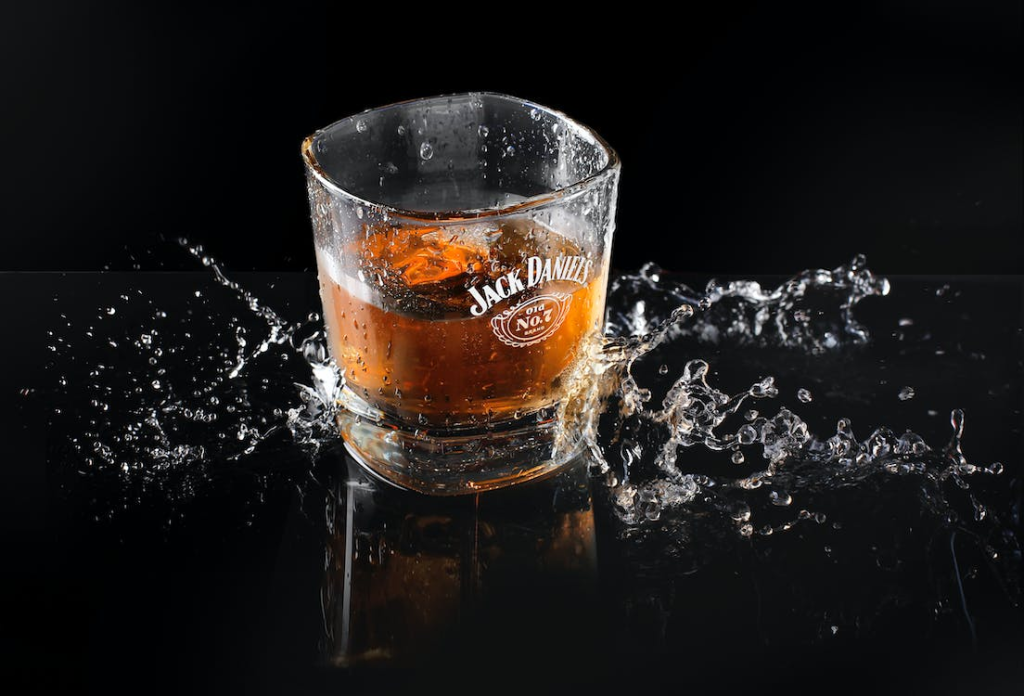Nothing beats unwinding at the end of the day with a drink of whiskey. The greatest sensation in the world is taking a sip of whiskey and having its warmth travel down your throat and into your very being.
Craft whisky from a distillery is the result of a lot of hard work by master distillers who choose the ingredients with care, monitor the distillation and aging processes, and bottle the spirit only when it is at its peak.

Different distilleries use different processes, which leads to a vast range of potential tastes, smells, and textures. This page will explain everything you need to know about distillery whisky.
Distillation: What Is It?
Through heating and cooling, distillation is the process of turning a liquid into a vapour and then back into a liquid. The entire concept is based on a natural phenomenon: when exposed to light, water in a puddle evaporates into thin air. When the temperature drops at night, however, the process is reversed, and water droplets develop on the grass.
Our ancestors may have wondered if they could get the same result by heating a liquid with fire. If you put anything cold on top of the warm vapour, does it turn back into liquid? The answers to these queries are the origins of distillation. Mix some fragrant plants and bottle the resulting vapours as a perfume. Make some alcohol out of a fermented liquid, and it will be even better.
What Exactly Is Distillery Whisky?
Whisky made at a particular distillery is called “distillery whisky.” Whisky is produced in distilleries by fermenting, distilling, and aging a mash of grains. The grain used, the distillation method and the aging process give each distillery’s whisky its unique look and taste. Scotch whisky distilleries in Scotland and bourbon distilleries in the United States are two examples of world-famous distilleries.
Many people who know a lot about whisky like to try whiskies from different distilleries so they can compare the subtle differences in taste and smell. Distilled from fermented grains, whiskey is an alcoholic beverage.
Whiskeys made from barley, corn, rye, wheat, and other grains have different tastes because they are made from different grains. In the same way, whiskey ages in wooden casks that have been used to age other spirits before.
The Process Of Making Whisky
The standard multi-step method for making whisky entails the following:
Malting
Malting is the first step in making whisky. It involves soaking barley in water to help it grow new roots. Next, the barley is dried with peat, coal, or other fuels. Each type of fuel gives the final product a different taste and smell.
Whiskey is made by first fermenting and then distilling raw grain or a mixture of raw grains. To extract the sugars that give malt whiskeys their distinctive flavour, the grain—typically barley—must be processed. Malting calls for wetting the grain, letting it sprout, heating it to kill the germs, and finally drying it.
Many whiskeys, but especially those from Ireland and Scotland, use the malting process. Even though rye and corn are more commonly used in American whiskeys, malt is still a major component.
Mashing
Once the barley has been malted, it is milled into grist, a coarse meal. Hot water is added to the grist, turning it into a sugary liquid called wort. No matter what kind of malt is used to make the whiskey, the grains’ sugars still need to be removed.
This is done by crushing the grains and mixing them with boiling water during the mashing process. By doing so, you get mash, which is similar to porridge. The mash can then be put through fermentation once all of the sugars have been removed.
Fermentation
The wort is then fermented with yeast for several days. Fermentation is the process through which yeast transforms the carbohydrates in the wort into alcohol. Alcohol production starts with fermentation. Yeast is added to the mash, and the yeast consumes all of the sugars in the mash and produces alcohol.
It takes a few days, give or take, depending on the yeast strain. Mash takes on new flavours during fermentation, turning into a beer-like liquid with around 10% alcohol by volume.
Distillation
After the wash has fermented, it is distilled to boost the alcohol content. The alcohol is normally extracted from the liquid in a copper pot still. Distillation turns the fermented liquid into a vapour and then back into a liquid, which increases the amount of alcohol in the liquid.
A still is the apparatus used for the process of distillation. Pot stills and column stills are the two most common types of stills. Bourbon, rye, and other American whiskies are primarily made in column stills.
Column stills are tall columns with plates at regular intervals along their length to make chambers. Since the still is heated from the bottom up, the fermented mash enters at the top of the column, where it is the coolest. When the fermented mash is added, it sinks to the bottom, where it meets hot steam. This causes the mash to evaporate and the alcohol to rise, while the water and grain solids sink to the bottom.
Every time the vapours hit a plate in the still, they condense. This gets rid of the heavier impurities while keeping more of the alcohol. A significantly stronger proof product is achieved in this way. Column stills can reach proofs in the 190s, which is 95% alcohol by volume. This is much higher than the proofs used to make bourbon and other whiskeys, though.
Aging
After distillation, almost all whiskeys are aged in barrels, often made of wood. Some whiskeys, like bourbon and rye from the United States, must be matured in brand-new charred oak barrels, whereas other whiskeys can be aged in other types of barrels. Two years of barrel aging are required before a whiskey can be called “straight.”
American whiskeys and bourbons have to meet more rules for aging, such as a certain amount of alcohol by volume.
The Process Of Blending And Bottling
After it has been aged, whisky is blended with other whiskies of the same or varying ages. After the whisky has been blended, it is bottled and given a unique name. Once the whiskey is ready, it is bottled at a strength of at least 40% ABV. Whiskey may be filtered so that it remains clear even when diluted with water or ice.
Different types of whiskey, such as bourbon, scotch, and Irish whiskey, are made using different procedures, ingredients, and rules.
Conclusion
Whisky production is a multi-stage process that begins with malting and continues through mash, fermentation, distillation, aging, mixing, and bottling. Every stage of the process shapes the whisky’s final taste, smell, and personality.
Every distillery has its special way of doing things, and that’s how they’re able to produce such a diverse array of whiskies with distinctive tastes. Distillery whisky comes in a wide variety of flavours, from the peaty smokiness of Scotch whisky to the sweet and spicy aromas of bourbon.
Visit the whiskey Distillery now! And enjoy the service, which provides a more expertly crafted flavour experience.
